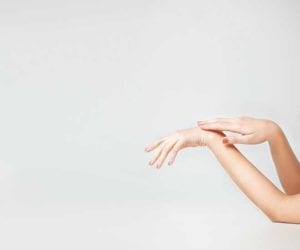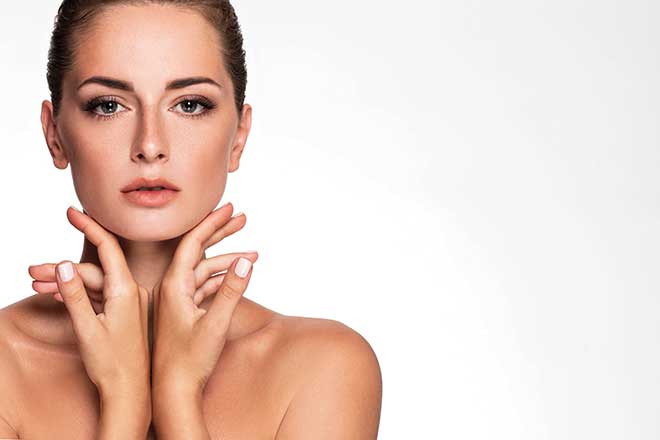Who do you call when your hair is thinning or your nails develop ridges? Or when your child develops ringworm? It may feel counterintuitive, but these are dermatologic issues. That’s right: the dermatologist has the tools and expertise to help you tackle all kinds of issues beyond acne and wrinkles.
Population aging and a growing incidence of skin cancer are increasing the need for dermatology care in the U.S. by more than 5 percent annually, as reported by the investment banking firm Harris Williams & Co. in a market study. There are about 10,000 dermatologists working in the U.S., but that is not sufficient—and the shortage “is expected to persist for the foreseeable future.”
Dermatologists receive 25.2 million office visits annually, 2.7 percent of all medical visits, according to the National Ambulatory Medical Care Survey compiled by the U.S. Centers for Disease Control and Prevention. Skin rashes alone add up to 10.8 million diagnoses each year, ranking 17th among principal reasons for medical visits (just after gynecological examinations and well-baby checkups). Diseases of the skin and subcutaneous tissues combined are the primary diagnosis in 40 million visits to dermatologists and primary care physicians annually, 4.3 percent of all diagnoses.
Dermatologists specialize in taking care of the skin, hair, nails and mucous membranes (linings of the nose, mouth and eyelids) and treat more than 3,000 diseases, according to the American Academy of Dermatology. They also improve the appearance of patients’ skin, hair and nails.
skin cancer
More than 5.4 million skin cancers are diagnosed in the U.S. each year, which is more than the total of breast, prostate, lung and colon cancers, the Skin Cancer Foundation reports. One in five Americans is likely to develop a skin cancer at some point in life.
The most dangerous form of skin cancer is melanoma, the foundation says. About 87,000 cases are expected to be diagnosed this year. ”These cancerous growths develop when unrepaired DNA damage to skin cells (most often caused by ultraviolet radiation from the sun or tanning beds) triggers mutations (genetic defects) that lead the skin cells to multiply rapidly and form malignant tumors. Melanomas often resemble moles; some develop from moles. The majority of melanomas are black or brown, but they can also be skin-colored, pink, red, purple, blue or white.”
As with many diseases, ”if melanoma is recognized and treated early, it is almost always curable, but if it is not, the cancer can advance and spread to other parts of the body, where it becomes hard to treat,” states the foundation. “Melanoma kills an estimated 10,130 people in the U.S. annually.” The Harris Williams study found that an increasing occurrence of skin cancer is a primary driver of rising demand for dermatology services, and that it has become the 16th most costly Medicare diagnosis, accounting for $2.9 billion in care annually.
cancer prevention
About 90 percent of skin cancers are associated with exposure to ultraviolet radiation from the sun, the Skin Cancer Foundation has found, so minimizing exposure is the most important step to keep yourself out of the statistics. ”Protect your skin from exposure to ultraviolet (UV) radiation from the sun and tanning beds, which can lead to skin cancer and early skin aging,” the American Academy of Dermatology recommends. ”Shield yourself from the sun’s harmful UV rays by seeking shade, wearing protective clothing and using a broad-spectrum, water-resistant sunscreen with an SPF of 30 or higher.”
The Skin Cancer Foundation adds its concerns about tanning devices: ”Ultraviolet radiation is a proven human carcinogen. More than 419,000 cases of skin cancer in the U.S. each year are linked to indoor tanning. Individuals who have used tanning beds 10 or more times in their lives have a 34-percent increased risk of melanoma compared to those who have never used tanning beds.”
hair
If Rapunzel wants to meet that prince, she should do it sooner rather than later, because that lush, thick, strong hair won’t be around forever, says Dr. Mary Noel George of Dermatology St. Louis.
it’s your hormones
“Your hormones change as you get older,” George says. “Those changes can decrease hair growth, the number of hairs and the thickness of hair.” As anyone who’s gone through it knows, “hair loss is one of the most difficult things that dermatologists deal with,” says Dr. Joseph A. Muccini, a surgical dermatologist at MidAmerica Skin Health & Vitality Center. “It requires real detective work. Almost everything can be treated, but how we treat it and how successful we are is variable.”
The issue is especially sensitive, since hair loss is typically thought of as a male problem. “Men’s hair recedes over their temples and thins over their crowns. In women, the aging pattern preserves the frontal hairline across the forehead and temples, but the entire frontal scalp thins,” George explains.
Women dealing with hair loss often become “very distressed,” Muccini adds. “Women have a different relationship with hair. Some men care about hair loss, and some men care a lot, but women always care a lot.”
blame your parents
The thickness and longevity of hair, as with its color, is determined by heredity. “People of northern European and Irish ancestry usually have lighter hair color and thinner hair,” George says. “People with darker skin tones have larger hairs and can have more hairs. Blondes actually have more hair follicles on average, but the hair shaft is thinner, making the hair appear less full.”
Muccini adds, “For most of your life you’ll do fine. Then you start losing a few more a day. The density and caliber of the hair decreases. A small increase in the numbers lost over time can add up to a dramatic effect.”
when issues arise
Hair growth can be affected by neural, vascular and nutritional factors, George notes. “There also are diseases that cause hair loss due to scarring of the skin,” she says. “When there is too much inflammation, the skin scars and hair follicles are lost.” The most commonly known condition that affects the scalp is lupus.
“Hair cycles can be upset by tremendously stressful events, such as emotional stressors, illnesses or hospitalizations,” George continues. “When the body is dealing with those it doesn’t put as much energy into hair growth.” Stress, however, is unlikely to cause permanent hair loss.
A number of factors may lead to telogen effluvium, the second most common form of hair loss. “It can occur as a result of metabolic, nutritional or enzymatic deficiency,” Muccini explains. “If you find and fix the defect, the hair gets better. Telogen effluvium also can be caused by childbirth, surgery or experiencing another major shock.”
Autoimmune diseases are another common source of hair loss. “Alopecia areata is an immune-related condition that causes temporary circular patches of hair loss,” George says.
no quick fixes
The supplement biotin is popularly taken to promote hair health but, George says, “there is no evidence that biotin is going to support hair growth. At best it might make the hairs you do have stronger.”
The medications Rogaine and Propecia can promote hair growth in about 60 percent of suitable patients. But Propecia “is never indicated for a pre-menopausal woman because it can cause birth defects,” Muccini says.
Hair transplantation may be a good option for some patients, he adds. “If you have hair loss with scarring on the scalp, any follicles transplanted there are going to get involved in that pathology and are not going to work,” he notes. “Transplantation is really a treatment only for androgenetic alopecia.” Hair conditioner, gel and mousse can make a difference in the appearance of hair, George adds. “They leave a coating that makes hair appear thicker and fuller. But it is temporary since it washes out.”
nails
Who would have guessed that one in five dermatologist visits is prompted by something unpleasant affecting the nails—splitting, pitting, loosening, shedding or fungal infections?
small but mighty
“We look at each other’s hands all the time, so people are self-conscious about them,” says Dr. Rebecca Chibnall, assistant professor of dermatology at Washington University School of Medicine. “Inflammation of the nails can be exquisitely painful, too. Even though it is a small surface area, it can cause a lot of discomfort and distress.”
Dr. A. Mary Guo, a SLUCare physician, agrees. “Nail problems are quite common. Most female patients come in with fragile nails. Their nails are thinner and sometimes have lines in them. Some women have nails that are separating from their nail beds.” Deformities and diseases of nails are known collectively as onychosis.
problems & solutions
One nail condition is onycholosis, a nail loosening from its underlying bed. “A lot of onycholosis is related to trauma or chemical exposure, especially to acetone nail polish removers,” Guo says. “I ask patients to use non-acetone remover.” Additionally, fragile nails are more prone to splitting and breaking, she says, so she advises clipping the nail as short as possible.
Gel nails also are associated with loosening, Chibnall says. “People like a gel manicure because it lasts longer, but the gel is set using ultraviolet light that can damage the nail plate (the hard surface of the nail). These also carry an increased risk of skin cancer.”
Nails become thinner and weaker with age, Chibnall notes. “It really bothers women, and we don’t have many treatments,” she says. “A common complaint is nail splitting when patients have longitudinal ridging—little lines that go from the nail base to the end of the nail. That can be caused by trauma, dry skin or eczema inflammation at the cuticle. We recommend moisturizing the cuticles at night with petroleum jelly.” She also recommends minimizing water exposure to preserve nail strength.
telltale nails
“Nails can be a sign of general health,” Guo says. “Sore nails can be a sign that the patient is anemic. People who have liver disease or kidney disease can have discoloration of their nails.”
And when people notice pits in their nails, that can be a sign of other conditions: psoriasis, eczema or alopecia areata, a type of hair loss caused by the immune system.
Onychomadesis is nail loss caused by disease or a stressful life event, Chibnall says. “We often see onychomadesis in kids after they have a viral infection. The nails grow back, but it can take up to a year.”
possible treatments
Some clear polishes strengthen nails, Guo says, and the nutritional supplement biotin, a type of Vitamin B also known as Vitamin H, might do so also. “For some women, it’s helpful,” she says, adding that there is not much medical research on the supplement. “One study said it can increase the thickness of the nail plate by 25 percent, and about two-thirds of patients found it helpful for brittle nails.”
fungus, a common source
Onychomycosis—thick, discolored fungal nails grown in humid socks and shoes—is a subject unspoken in polite company. But medical literature says it is found on the toes of one in seven Americans.
“Most of the time, it’s not dangerous for general health,” Guo says of nail fungus, “however, the standard treatment of oral medication has the potential to cause liver damage.” Safer topical medications may clear fungus, but very slowly. “Topical medication has to be applied every day for 10 to 12 months. I ask patients if they want to live with fungus or treat it.”
conditions treated by dermatologists:
■ Acne
■ Alopecia areata
■ Bedbugs
■ head lice
■ Cellulitis
■ Dermatitis
■ Dry skin
■ Eczema
■ Genital warts
■ Hair loss
■ Herpes simplex
■ Hives
■ Ichthyosis vulgaris
■ Lichen planus
■ Lupus
■ Melanoma
■ Moles
■ Nickel allergy
■ Poison ivy
■ Psoriasis
■ Scabies
■ Shingles
■ Ta ttoo removal
■ Warts
10 skin care secrets from the American Academy of Dermatology:
1. Apply sunscreen every day before you go outdoors. Sunscreen is the closest thing we have to a fountain of youth.
2. Don’t smoke. Smoking speeds skin aging, slows wound healing and worsens some skin diseases.
3. Check your skin for skin cancer. If you notice a spot that differs from the others, or one that changes, itches or bleeds, make an appointment to see a dermatologist.
4. Use a self-tanner if you want darker skin.
5. Use skin care products that match your skin’s needs. Is it oily, dry, normal, combination or sensitive? Do you have a skin condition? Using products formulated for your skin’s needs will help your skin look and feel its best.
6. Resist the urge to scrub your skin clean. Irritation can worsen any skin condition, including acne.
7. Wash your face when waking, before bed and after sweating.
8. Gently wash your face. Wet it with lukewarm water and apply a mild cleanser in a circular motion with your fingertips. Finish by completely rinsing off the cleanser and gently patting your face dry with a clean towel.
9. Stress less. Stress can cause flare-ups of many skin conditions.
10. See a dermatologist if you dislike something about your skin.








